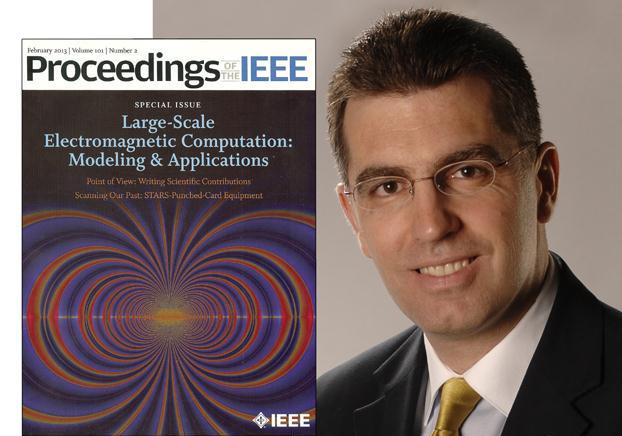BiLCEM's Computational Research Featured in Leading Journal
Since 2006, Prof. Levent Gürel and BiLCEM (Bilkent University Computational Electromagnetics Research Center) researchers have been developing cutting-edge computational methods to solve the world's largest integral-equation problems in electromagnetics. Their achievements in parallel computing and fast algorithms in computational electromagnetics have been recognized with not one but two articles in the February 2013 issue of one of the most prestigious scientific journals, Proceedings of the IEEE. One of the articles focuses on a novel scheme developed at Bilkent for parallel computing of fast algorithms, while the other spotlights accurate solutions of extremely large integral-equation problems in computational electromagnetics.
With more than 400,000 members, IEEE (the Institute of Electrical and Electronics Engineers) is the world's largest technical professional organization. IEEE publishes over 100 refereed journals, which correspond to more than 30 percent of the world's literature in the fields of electrical and electronics engineering and computer science, with Proceedings of the IEEE being its flagship publication. Journals are usually evaluated by their impact factor and half-life statistics, and Proceedings of the IEEE demonstrates exceptional performance on both counts. This is not the first time Prof. Gürel's research has been recognized by IEEE. He was elevated to IEEE Fellow status in 2009 and named an IEEE Distinguished Lecturer for 2011-2013, providing him the opportunity to share his expertise in computational electromagnetics with researchers all over the world.
Over the years, BiLCEM researchers have been solving some of the world's largest dense matrix equations involving hundreds of millions of unknowns. This is the outcome of a multidisciplinary study involving electromagnetics, parallelization (computer science), parallel clusters (computer architecture), advanced mathematical methods for integral equations, fast solvers, iterative methods, preconditioners and linear algebra. Such powerful computational capability is utilized to find solutions to previously intractable physical, real-life and scientific problems in important areas such as medical imaging, bioelectromagnetics, metamaterials, nanotechnology, radars, antennas, wireless communications, remote sensing, optics and many other disciplines involving electromagnetic fields, acoustic waves and even quantum physics.
